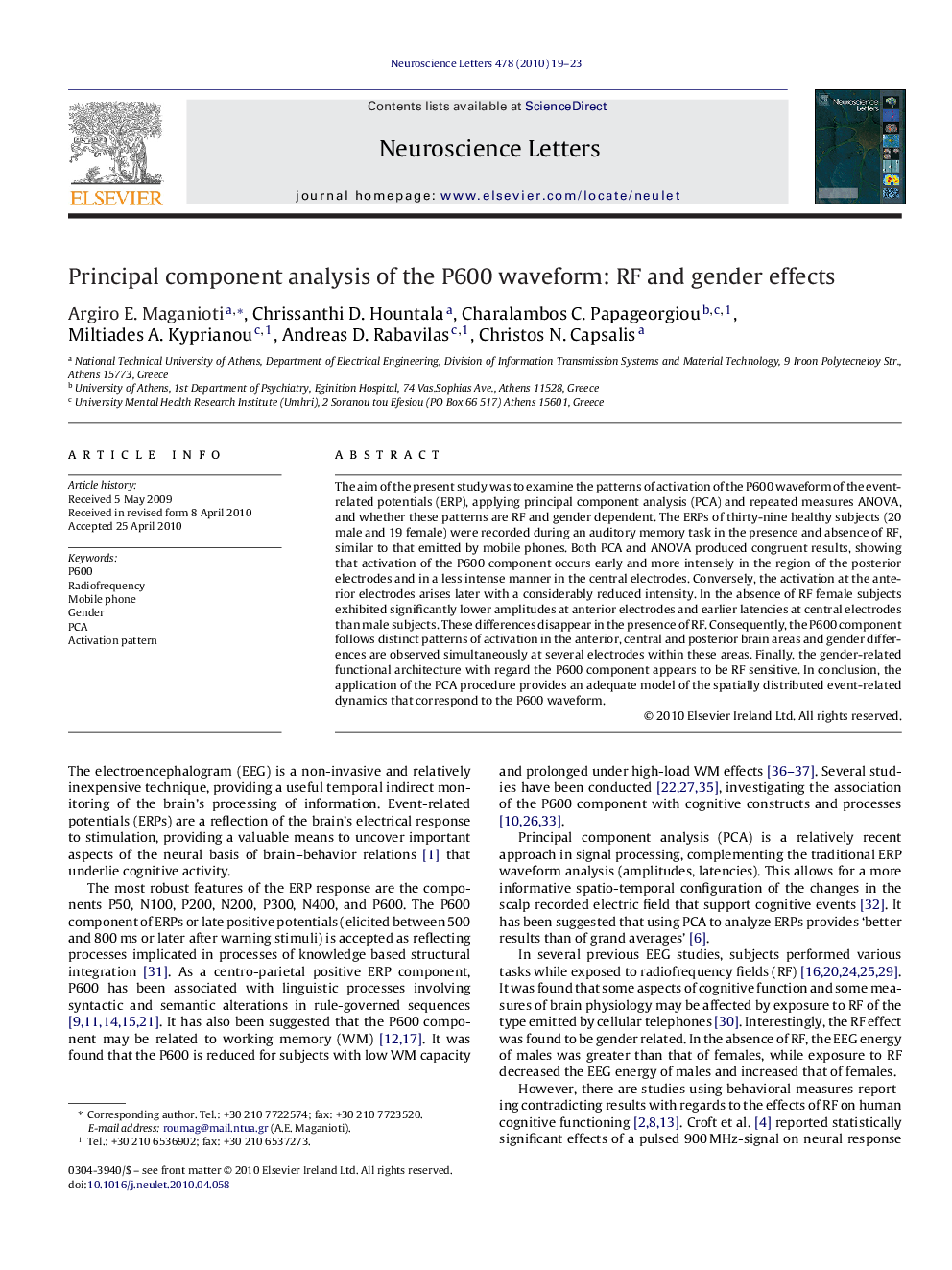| Article ID | Journal | Published Year | Pages | File Type |
|---|---|---|---|---|
| 4345781 | Neuroscience Letters | 2010 | 5 Pages |
The aim of the present study was to examine the patterns of activation of the P600 waveform of the event-related potentials (ERP), applying principal component analysis (PCA) and repeated measures ANOVA, and whether these patterns are RF and gender dependent. The ERPs of thirty-nine healthy subjects (20 male and 19 female) were recorded during an auditory memory task in the presence and absence of RF, similar to that emitted by mobile phones. Both PCA and ANOVA produced congruent results, showing that activation of the P600 component occurs early and more intensely in the region of the posterior electrodes and in a less intense manner in the central electrodes. Conversely, the activation at the anterior electrodes arises later with a considerably reduced intensity. In the absence of RF female subjects exhibited significantly lower amplitudes at anterior electrodes and earlier latencies at central electrodes than male subjects. These differences disappear in the presence of RF. Consequently, the P600 component follows distinct patterns of activation in the anterior, central and posterior brain areas and gender differences are observed simultaneously at several electrodes within these areas. Finally, the gender-related functional architecture with regard the P600 component appears to be RF sensitive. In conclusion, the application of the PCA procedure provides an adequate model of the spatially distributed event-related dynamics that correspond to the P600 waveform.
